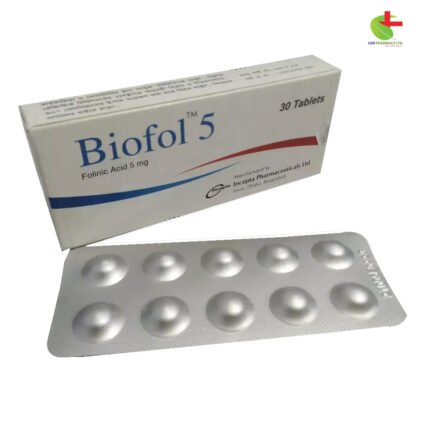Cavic-C Plus
195.00৳ Strip
- Cavic-C Plus is a comprehensive supplement designed to support bone health and overall well-being.
- Combines Calcium Lactate Gluconate, Calcium Carbonate (from Coral), Vitamin C, and Vitamin D3.
- Helps prevent osteoporosis, boost immunity, and support calcium absorption.
- Ideal for individuals with increased nutritional needs, such as during pregnancy, lactation, or old age.
- Consult your doctor before use for personalized dosage recommendations.
 Brand
Brand
|
Incepta Pharmaceuticals Ltd |
|---|---|
 Generics
Generics
|
Calcium Lactate Gluconate + Calcium Carbonate + Vitamin C + Vitamin D3 |
 Type
Type
|
Tablet |
Indications for Cavic-C Plus
Cavic-C Plus is recommended for:
- Osteoporosis treatment as an adjunct to specific therapy.
- Increased Calcium, Vitamin C, and Vitamin D requirements during pregnancy, lactation, childhood growth, adolescence, and old age.
- Osteomalacia and Calcium/Vitamin D deficiency, especially in housebound or hospitalized elderly.
- Cold and flu prevention as an adjuvant.
- Relief from postmenopausal syndromes and premenstrual symptoms.
- High body temperature conditions.
- Acts as an alkalizing agent in cases of systemic acidosis.
Note: Always consult a registered healthcare professional before use.
Composition
Each effervescent tablet of Cavic-C Plus contains:
- Calcium Lactate Gluconate: 1000 mg
- Calcium Carbonate (from Coral source): 327 mg
- Ascorbic Acid (Vitamin C): 500 mg
- Vitamin D3 (as Cholecalciferol): 400 IU
Pharmacology
Cavic-C Plus combines Calcium Gluconate and Calcium Carbonate (from Coral), which help maintain calcium balance in the body, supporting muscle, nerve, and cardiac functions. The Calcium Carbonate from Coral has a structure similar to human bone, promoting better absorption. Vitamin D3 facilitates the absorption of calcium from the GI tract, while Vitamin C enhances the body’s stress response and supports immunity. Together, they work synergistically for bone health, osteoporosis prevention, and promoting overall well-being.
Dosage & Administration
- Adults & Adolescents: 1 effervescent tablet daily.
- Children: ½ effervescent tablet daily.
- Infants: As prescribed by a physician.
Dissolve the tablet in a glass of water and consume.
Note: Always follow the advice of your healthcare provider.
Interactions
- Thiazide diuretics: May reduce urinary calcium excretion; monitor for hypercalcemia.
- Certain foods (e.g. oxalic acid, phosphate, phytinic acid): May decrease calcium absorption.
- Cardiac glycosides: Use caution as calcium and Vitamin D may enhance their effects.
- Phenytoin/Barbiturates: May reduce Vitamin D efficacy due to metabolic activation.
Contraindications
- Hypercalcemia due to conditions like myeloma, bone metastases, sarcoidosis, or primary hyperparathyroidism.
- Vitamin D overdosage and severe renal failure.
- Hypersensitivity to any ingredient in the product.
Side Effects
Possible mild side effects include:
- Gastrointestinal disturbances: Constipation, nausea, flatulence, and abdominal pain.
- Skin rash: Occasionally reported with Vitamin D use.
- Long-term use may cause hypercalciuria and in rare cases, hypercalcemia.
Pregnancy & Lactation
Use during pregnancy and lactation should be under a healthcare provider’s supervision. Calcium and Vitamin D needs increase during these periods, but excessive Vitamin D intake has been shown to have teratogenic effects in animals. Vitamin D and its metabolites are excreted in breast milk, so caution is advised when supplementing.
Precautions & Warnings
- Monitor plasma calcium levels and urinary calcium excretion in patients with mild renal failure or hypercalciuria.
- Renal stones history: Measure urinary calcium excretion to avoid hypercalciuria.
- Regular monitoring is necessary with long-term treatment to prevent complications like hypercalcemia.
Overdose Effects
- Acute/Chronic overdose may cause hypercalcemia due to Vitamin D toxicity.
- Symptoms include nausea, vomiting, constipation, and polyuria.
- Treatment: Discontinue calcium and Vitamin D, hydrate, and manage symptoms.
Storage Conditions
Store in a cool, dry place. Protect from light and moisture. Keep out of reach of children. Keep the container tightly closed.













Reviews
There are no reviews yet.